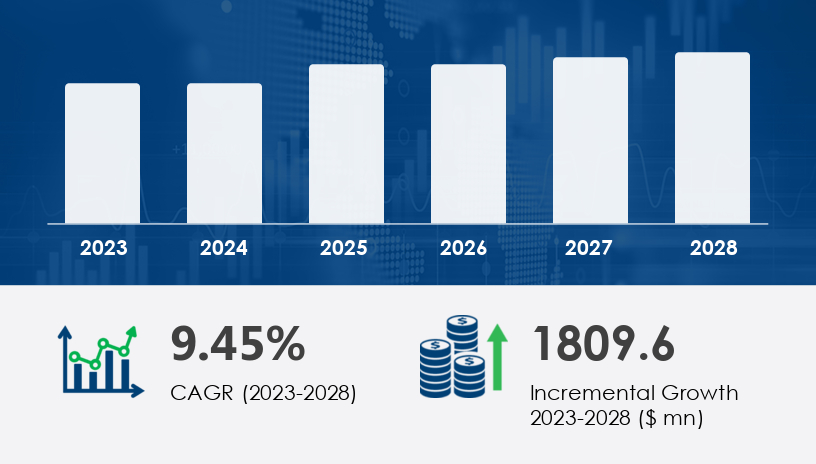By 2028, the global road safety market will witness a USD 1.81 billion boost, accelerating at a robust CAGR of 9.45%.This bold projection marks not just a fiscal milestone but a strategic turning point in global transportation safety. As we look toward the 2025 Outlook, the road safety market is no longer just a regulatory necessity—it's a dynamic ecosystem reshaping how cities, governments, and freight operators mitigate risk and prioritize human life.
For more details about the industry,¬Ýget the PDF sample report for free

The global increase in road accidents and fatalities is a stark reminder that the urgency for robust road safety solutions is not just statistical—it's humanitarian. Over 38,000 road fatalities occur annually in the U.S. alone, costing the economy nearly USD 850 billion in healthcare, productivity loss, and emergency response. This has catalyzed government bodies, private enterprises, and tech innovators to converge around one mission: zero road fatalities.
The solutions segment accounted for the largest market share in 2023 and continues to outpace services thanks to surging demand for automated enforcement and real-time detection. These include:
Red light and speed enforcement
ALPR/ANPR (Automatic Number Plate Recognition)
Incident detection systems
School bus stop-arm enforcement tools
Backed by Geographic Information Systems (GIS), Global Positioning Systems (GPS), and image-processing capabilities, these tools provide granular visibility into traffic behaviors.
The market is witnessing a paradigm shift toward connected road infrastructure, where vehicles communicate with traffic systems, sensors, and even pedestrians' mobile devices. This next-gen IoT architecture enables:
Collision avoidance
Automated traffic rerouting
Dynamic speed control via smart signage
As seen in Bosch’s 2024 launch of its V2X communication system, these developments are redefining how vehicles and roads "talk" to each other, making predictive safety a reality.
Get more details by¬Ýordering the complete report
North America will contribute approximately 29% of the global growth, primarily led by the U.S., where infrastructure modernization and public safety mandates are accelerating adoption.
With the EU’s 2024 regulation requiring Intelligent Speed Assistance (ISA) in all new vehicles, Europe is embracing mandatory tech-enabled safety as standard. This aligns with regional ambitions to halve traffic fatalities by 2030.
Despite explosive growth, the market faces a significant bottleneck: inconsistent global standards and fragmented regulatory ecosystems. Countries with differing traffic rules (left vs. right driving) and economic capabilities need customized solutions, driving up development costs and slowing mass adoption.
With the rise in connected systems, cybersecurity has emerged as a critical challenge. ALPR systems, smart cameras, and back-office databases are increasingly vulnerable to data breaches and privacy violations.
"Data security is no longer an IT issue—it's a road safety issue," asserts Senior Analyst a Technavio
For more details about the industry,¬Ýget the PDF sample report for free
The road safety market is witnessing significant growth driven by technological advancements and increasing concerns around vehicular accidents and pedestrian protection. A variety of intelligent devices and systems are being integrated into traffic management infrastructure, including traffic cameras, speed radar, and red light cameras, all designed to enhance law enforcement and public safety. Solutions such as license plate recognition and collision avoidance systems help monitor violations and reduce crash incidents. Vehicle-integrated safety technologies like lane departure warning, adaptive cruise control, blind spot detection, and forward collision warning are becoming standard in modern automobiles. Moreover, advanced systems such as automatic emergency braking, driver monitoring systems, and fatigue detection are helping to proactively address driver behavior. The inclusion of distraction alert, facial recognition, and eye tracking further strengthens the ability of vehicles to detect driver alertness. Complementing these features, innovations like intelligent speed assistance, vehicle-to-vehicle, and vehicle-to-infrastructure communication enable real-time responsiveness to traffic conditions. Urban planning is increasingly incorporating traffic signal control, smart traffic lights, and pedestrian detection to optimize traffic flow and enhance on-road safety for all users, including vulnerable road users.
The integration of big data analytics will allow transportation authorities to predict high-risk zones before accidents happen. Analysis of user behavior, traffic flow, and road conditions can automate not only incident detection but incident prevention.
Cities are evolving into intelligent corridors, where AI orchestrates every movement—pedestrian crossings, signal timing, even weather-adjusted speed limits.
Get more details by¬Ýordering the complete report
Standardize Protocols: Collaborate on international standards for device interoperability and data sharing.
Invest in Data Security: Make cybersecurity a core requirement in all road safety tech RFPs.
Incentivize Adoption: Governments can offer tax credits or grants for municipalities adopting smart safety solutions.
Public-Private Partnerships: Leverage joint ventures to fund and scale smart infrastructure in underserved areas.
With increasing urbanization, the stakes are rising. The road safety market isn't just about traffic—it's about trust, public confidence in infrastructure, and systemic resilience in the face of environmental and operational disruptions.The road to Vision Zero—a global strategy to eliminate all traffic fatalities—is long, but with technologies like AI, V2X, and predictive modeling, we are finally moving in the right direction.
Safe and Secure SSL Encrypted